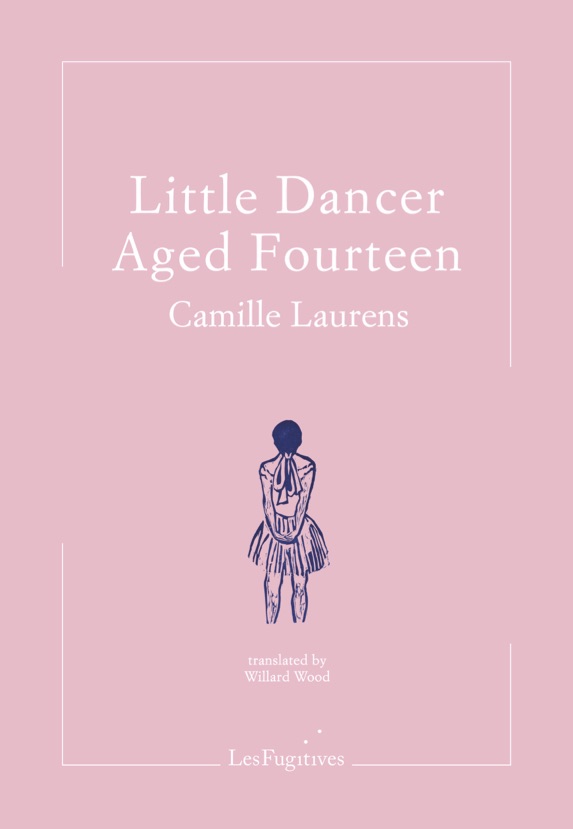Edgar Degas is famous for his depictions of ballet dancers. His drawings, paintings and sculptures of young girls clad in the uniform of the dance are signs of an artistic obsession that spanned a remarkable artistic career. One work in particular – a sculpture of a young ballet dancer in a rest position – cemented his reputation as a pioneering spirit, unafraid of provoking controversy in the pursuit of perfection. It is this sculpture and the story behind it that Camille Laurens explores in Little Dancer Aged Fourteen, whose immersive translation by Willard Wood conveys a deeply personal work in which subjectivity and speculation pull at the seams of non-fiction writing.
Laurens’ project is not simply a matter of adding another voice to the myriad artistic critiques of Degas’ work. Little Dancer Aged Fourteen is precisely what its title suggests: an investigation into the life of the girl who became the subject of this artwork. The girl in question, Marie van Goethem, was one of the so-called petits rats who in late nineteenth-century Paris barely found a living in her work as a ballet dancer at the Paris Opera. These children often lived in poverty, forced into increasingly disreputable work in order to feed their families.
Under the pen of an author intent on uncovering all there is to be known of Marie’s life, Little Dancer Aged Fourteen develops into a curious form of investigative literature, exposing the unspoken moral failings of nineteenth-century culture in its search for Marie. The criticism throughout, if implicit, is certain. “Which counts for more, the painting or the model, art or nature?” asks Laurens, evoking the male gaze that shapes society’s view of art, where an artwork is simply considered as a reflection of its creator’s genius. No time is given to the living subject represented within the work; to pose for a sculpture is to submit oneself entirely to the gaze of the artist. Laurens is well aware of the cruel irony in the fact that many of the Paris Opera’s petits rats were forced into prostitution as a way of earning a living. Modelling and prostitution alike are dependent on selling the body.
 If details of Marie’s own life are scarce, Laurens draws on innumerable cultural historical artefacts to inform her vivid depiction of nineteenth-century Parisian society. Writing on an era whose novels were dominated by Naturalism, a form centring on the raw representation of modern life in all its baseness, Laurens shows a similar intent in peeling away at the layers of Degas’ sculpture to reveal the often sordid story beneath. The book is adept at evoking the "canvas of sufferings" likely endured by Marie and her ilk, in a world of male "protectors" among whom Degas seems only to retain his honour on account of his misogyny.
If details of Marie’s own life are scarce, Laurens draws on innumerable cultural historical artefacts to inform her vivid depiction of nineteenth-century Parisian society. Writing on an era whose novels were dominated by Naturalism, a form centring on the raw representation of modern life in all its baseness, Laurens shows a similar intent in peeling away at the layers of Degas’ sculpture to reveal the often sordid story beneath. The book is adept at evoking the "canvas of sufferings" likely endured by Marie and her ilk, in a world of male "protectors" among whom Degas seems only to retain his honour on account of his misogyny.
Often reaching the level of art criticism, Little Dancer Aged Fourteen suggests rightly that the significance of this iconic sculpture can be enriched by a full consideration of the context in which it was made. The problem, however, lies in just how little is known about the life of Marie van Goethem. Among the boundless descriptions of Parisian society, the life of the little dancer is revealed in short excerpts whose brevity serves only to confirm the androcentric reality of her time. Laurens captures the frustration – and fascination – of this investigation and of art history in general: “The sculpture provides no answer. Degas provides no answer”.
For a work of non-fiction, the volume of questions and speculation is a sign that this is an intensely personal study, undertaken by an author more accustomed to writing novels. Its status as a passion project, though, takes nothing away from the achievement of Little Dancer Aged Fourteen. Reverting to the author’s own life in its closing moments, this book wills its reader to look beyond the surface, to discover the writer behind the writing, and the girl behind the sculpture.
- Little Dancer Aged Fourteen by Camille Laurens trans. Willard Wood (Les Fugitives, £14.99)
- Read more book reviews on theartsdesk















Add comment